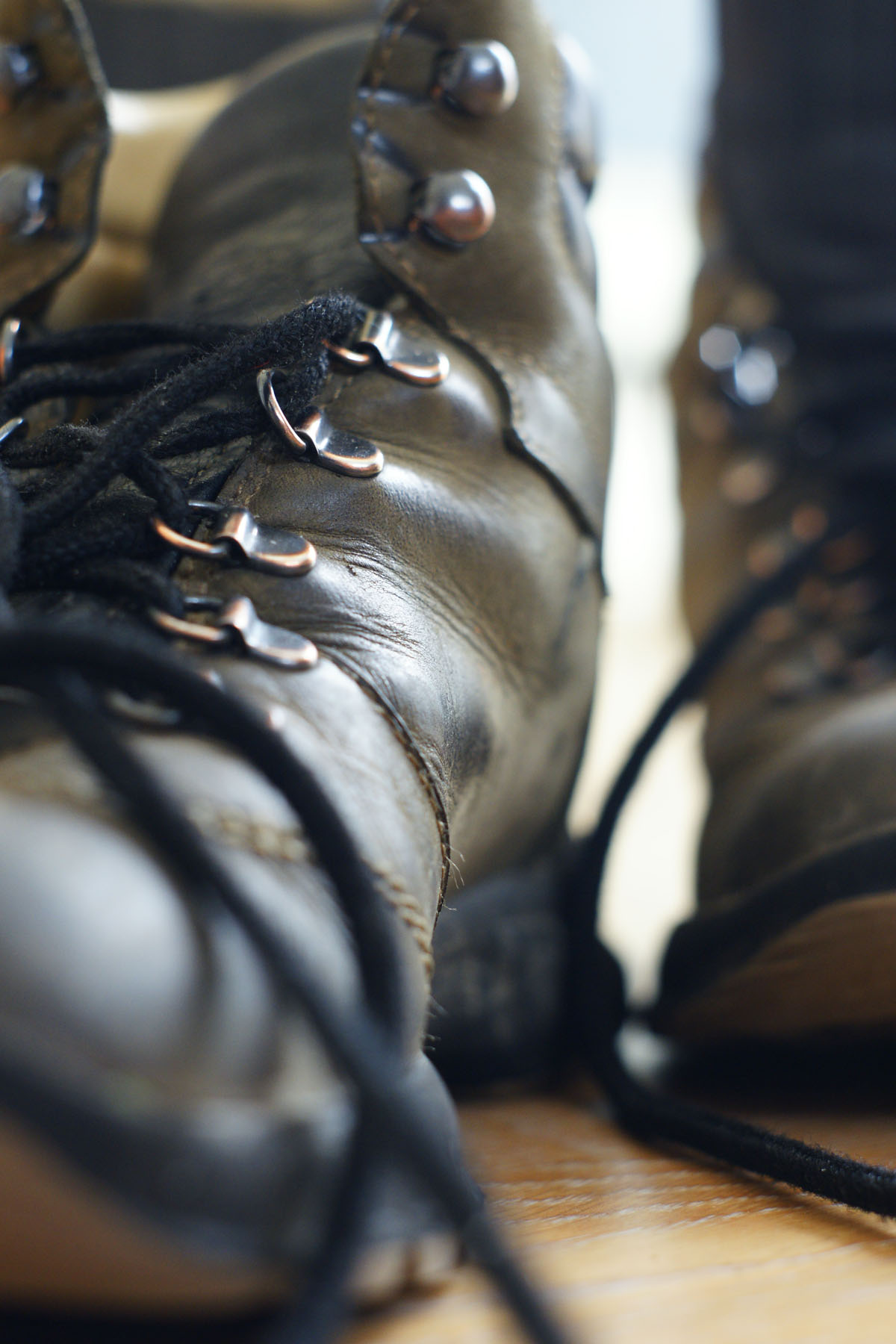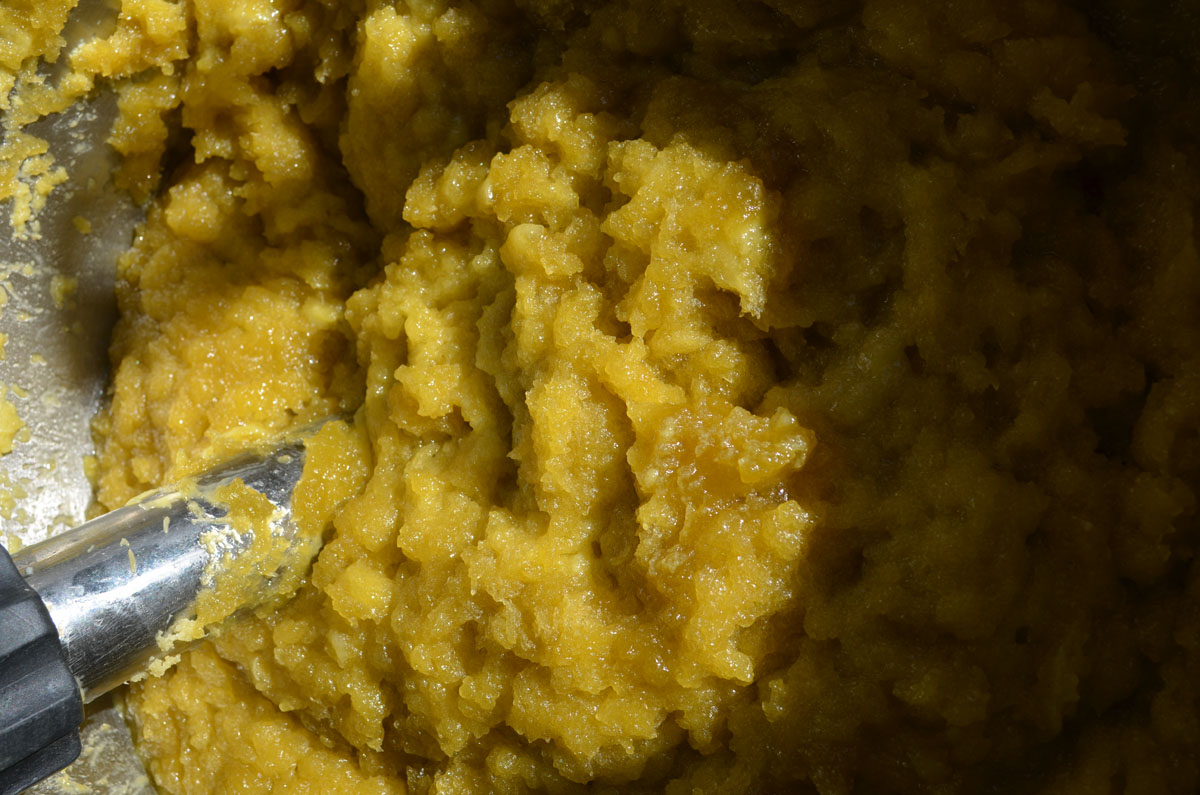
An ancient craft
The craft of making natural soap goesbackalongtime.
With the influence of “el-Andalus” (approx. 8th century) in southern Spain the traditional production of soap made it’s way to Europe.
Muslim conquerors took hold over parts of the Iberian Peninsula and not only taught us Europeans the art of soap making but also advanced knowledge of medicine, mathematics, astronomy, chemistry, geography, literature, philosophy and music.
Olive oil & lye
A DuschMödeli is made of vegetable oil (mainly organic olive oil) and lye.
There are two ways of making soap: hot (the classic method) or cold (called “modern method”).
With the traditional way of making natural soap the lye and the oil are simmered under controlled heat conditions.
Whereas with the modern process, oil is simply mixed with lye at room temperature.
It’s done in a jiffy and makes much less “mess”.

Advantages and disadvantages
With the cold method, you have to wait 4 to 6 weeks before you can use the soap.
During these weeks the chemical reaction between lye and oil takes place.
Whereas the “classic”, hot method of production the soap is finished and ready to use immediately after the simmering process. All of the chemical reactions between lye and vegetable oils are concluded and have turned the fatty acids into soap.

Fragrance
If you (like me) work with 100% natural essential oils you tend to go with the traditional hot soap making process.
Because using the “cold” process, the soap has to “cure” for 4 to 6 weeks, (during which the saponification process takes place). During these weeks lots of essential oils are lost. Especially the top notes.
A great pity, because the smell is heart and sole of any piece of fragrant soap.
With the “classic” process on the other hand, you wrap your soap after approx. 2 weeks. And so the essential oils are nicely preserved and the “DuschMödeli” smells quite wonderfully.
Cautious procedure
It is often claimed that the cold process is much gentler than the hot process. Because the natural oils and the lye are mixed at room temperature.
However, it is important to know that when oil and lye are mixed, an “exothermic reaction” takes place. The oil and lye molecules react together and briefly heat is generated (around 60°C).
With the hot process, the soap mass simmers at 60 to 80°C.
The “gentleness” thus consists at best in a 20°C temperature difference.
Additionally it’s interesting to know, that the vast majority of natural oils don’t undergo any molecular change under 90°C…
Soap
Industrially manufactured showering agents are mainly made from a wide variety of petroleum derivatives.
Economically, the use of these waste products from the petroleum industry certainly makes sense.
Whether petroleum derivatives also are beneficial to our skin – our largest organ – is another question.
The majority of industrial soaps consist of different surfactants. A surfactant has the task of building a bridge between water and oil in order to transport the oil away from wherever.
In the case of soap, the idea is that the greasy film on our skin is dissolved and washed away.
Clean
Why do we want to get rid of this greasy film ?
We always talk about the valuable protective “acid mantle”. This consists of fat that is produced in our sebaceous glands and slowly diffuses to the surface of our skin.
An infant’s skin has a pH value of about 8.
The older we get, the more acidic our skin surface becomes. On average, we speak of a pH value of 5.5 for an adult.
There are various theories about whether alkaline or acidic cleansers are better.

Acid mantle
Dust, bacteria, fungal spores, etc. accumulate on this oily film on our skin. At a certain point in time we get the urge to wash ourselves. Because we itch.
That’s where the surfactant enters the scene.
Surfactants
Natural soap is also a surfactant. A very mild one.
The combination of lye and oil leads to a chemical reaction which results in a salt, which we call “soap“.
Finished soap used for showering should still contain oil, which re-lubricates our skin.
Otherwise our skin dries out.
In this context, the soapmaker speaks of “super-fatting”.
My “DuschMödeli” have a superfattyness between 9 and 12%.
Natural surfactants
There are surfactants that are made from natural raw materials. One of the most widely used is a sugar surfactant, e.g. alkyl polyglucoside (APG).
APG’s are relatively biodegradable. Apparently, they pose a low water hazard in comparison to other surfactants. Additionally they are well tolerated by our skin and they can be used for different applications (food, cosmetics, detergents, etc.). They derive from renewable resources (mostly from coconut and palm oil… which asks for another debate…).

Disadvantage of APG’s: they are decisively more expensive than synthetic surfactants. Therefore they’re treated like niche or luxury products.
The production and use of sugar surfactants is rather new because effective manufacturing processes have only shortly been available.

Synthetic surfactants
These are produced from petroleum derivatives. Today, over 90% of all surfactants used are synthetic, as they are much cheaper than so-called “natural” ones.
They are made from inexpensive petroleum derivatives (waste product of the petroleum industry) and so the majority of the chemical industry has focused on these surfactants.
They tend to be less skin friendly and are poorly biodegradable; in some cases even highly water polluting if not exceedingly toxic.
Palm oil
What is this vegetable oil criticized for ?
To put it short: it’s produced and traded under inacceptable conditions.
For the environment, the people and the animals.
Why have sales of palm oil exploded during the last 50 years ?
Because the true cost is not being paid. By any means.

Green washing
Large corporations are in charge of production and distribution of this highly essential raw material.
These mostly global companies trade in large quantities and have tremendous market power.
When things are done on a large scale, respect for nature or people decreases exponentially.
You can watch this over and over again.
“Green commitments” in form of agreements and certifications are steadily increasing…
Work for their living
People living in primeval forests in Indonesia and Malaysia (and since a few years also in Brazil & Africa) have no say in this industry. Large corporations constantly expand their ruthless cultivation methods.
Even if jobs are created – what’s the point in having a job which you can barely survive on ? Most jobs in the palm oil industry are “working-poor” jobs.
And what about the animals and plants in the primeval forests ? Obviously they have no possibility to defend themselves. Their livelihood is irretrievably destroyed.
The driving force behind this sad story is us, the “industrial countries” with our grotesque consumption habits.
Quickly bought.
Quickly disposed of.
Quickly replaced.
Not appreciated.
w/o palm oil
Since I’ve dived into the theme of “natural cosmetics”, I have developed a “tic” (probably more than one…): I want to know exactly what natural cosmetics are made of.
Often I’m amazed to find the inexpensive (and therefore widely used) palm oil almost everything.
Also in bio-shops.
I have decided that good natural soap simply doesn’t need this highly debatable oil.
Organic olive oil from southern Italy will do just fine.

Maybe I’m too critical – but I more and more get the impression that so-called “sustainable palm oil” has become very popular amongst large corporations…
Act and think !
I definately annoy my environment every now and again with “lectures” on “what-one-should-do”, “what-one-should-buy” and especially “what-one-should-not-buy”…
My family has started to close their ears on me…
BUT words are of little use. Only actions bring change.
Changing our habits will lead to change in consumption.
Change of consumption will lead to change in demand.
And change in demand will lead to change in supply.
Talking about palm oil this means:
- avoid any product which contains palm oil
- avoid buying processed food (cookies, cakes, doughs etc. – also because of the packaging)
- make as much as possible yourself (detergent, dough, sauces etc.)
- keep looking for good alternatives (things are changing all the time)
- throw laundry less often into the dirty laundry basket
It’s not like I smell like a skunk because of the measures I take.
I definitely don’t…
But it seems (that’s what my hubby tells me anyways….) that sometimes I seem to resemble a scarecrow – but that’s probably more due to my disinterest in dressing-up…
Thoughts about quantities
Waste is a topic we like to avoid – at least I do.
Stuff which can’t be recycled: into the gray bag. Stick it on the roadside and forget about it.
Before I started separating plastic (in a big see-through bag) I was convinced that our household hardly produces plastic waste.
I was shocked to see how quickly the bag was filled up. With plastic.
Horrific.


